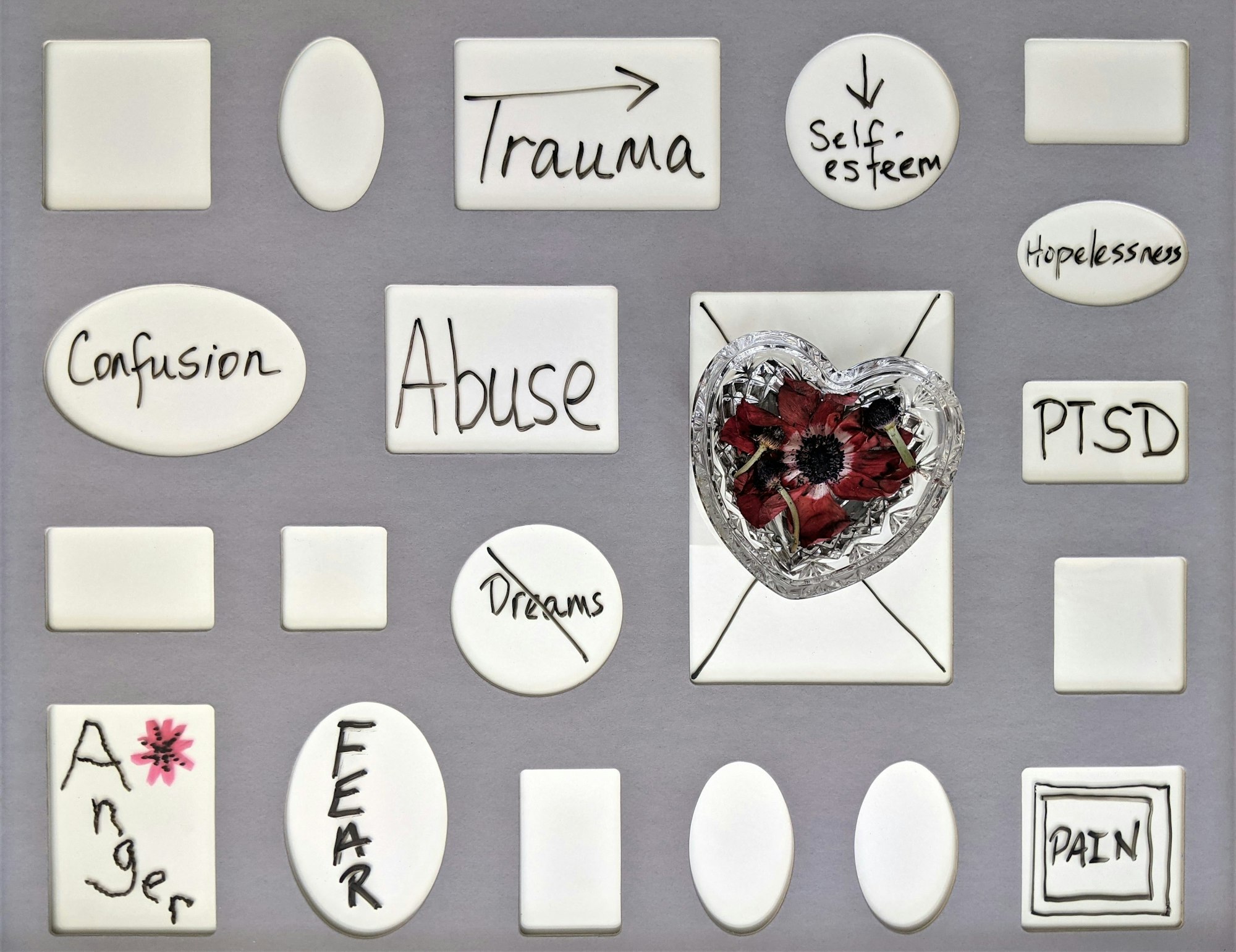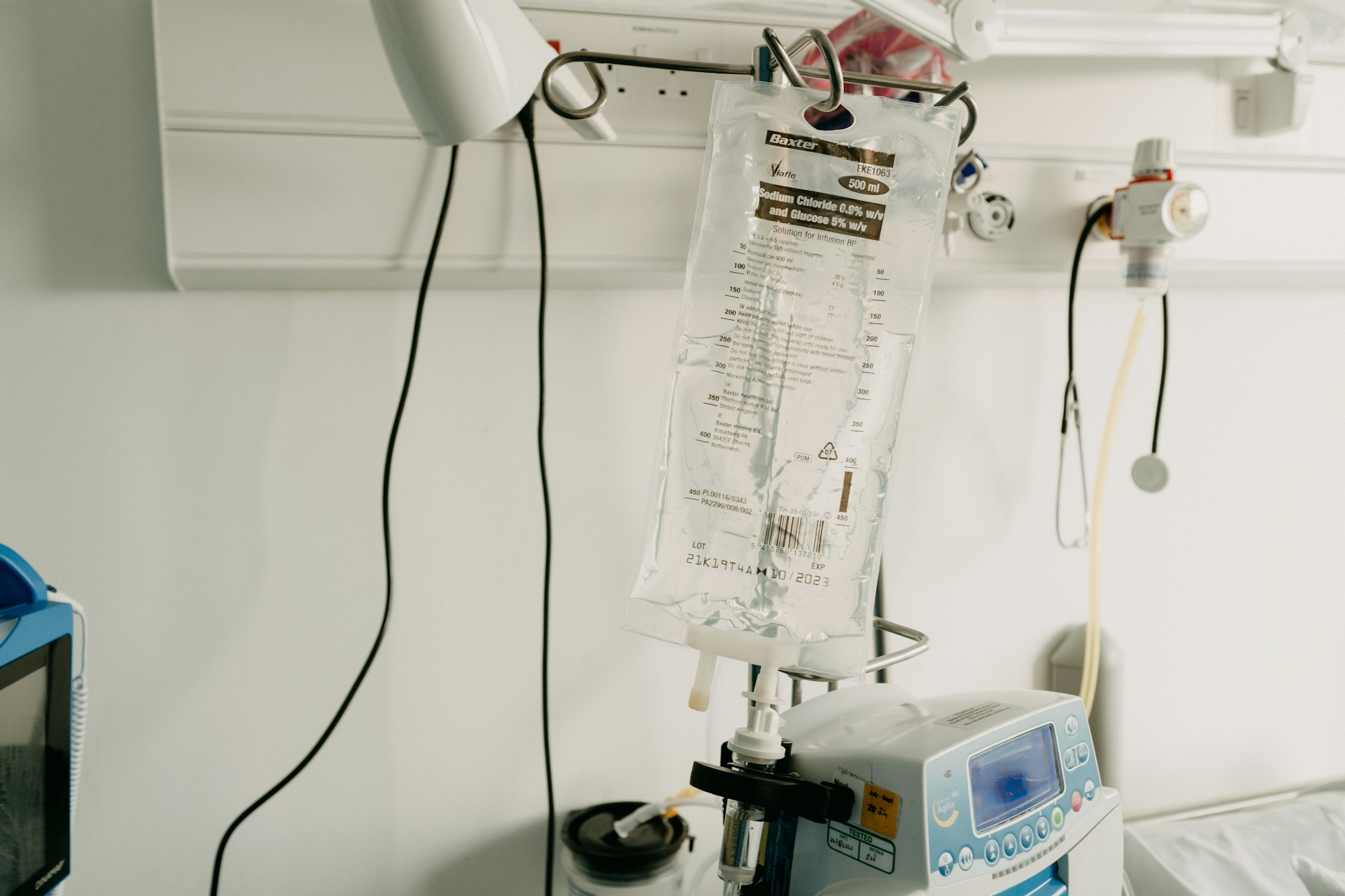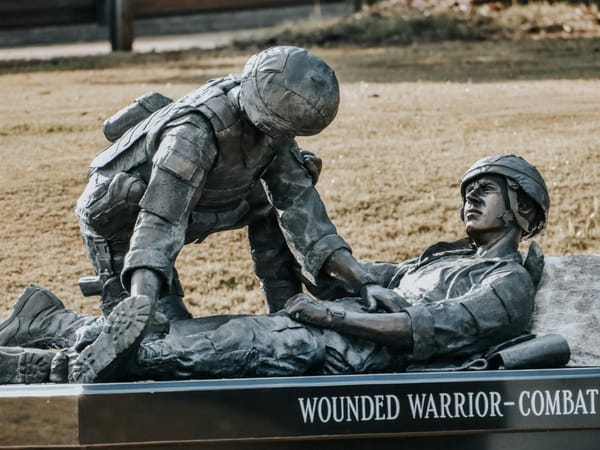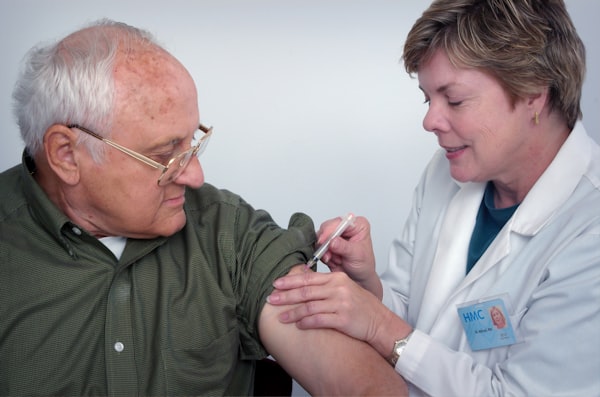Can Trauma Cause Hallucinations?
Can Trauma Cause Hallucinations?" explores the complex link between traumatic experiences and hallucinations. This episode dives into how trauma, PTSD, and intense emotional stress can affect the mind, leading to hallucinations, and discusses treatment options for those affected.

Post-traumatic Stress Disorder (PTSD) is an anxiety disorder caused by a traumatic experience. It can have a devastating effect on people’s lives, and it is estimated that around 8 million adults in the United States are affected by PTSD. This disorder can cause a variety of symptoms, including flashbacks, nightmares, severe anxiety, and uncontrollable thoughts. Unfortunately, PTSD can also cause hallucinations.
Childhood trauma is often a significant factor in the development of PTSD, contributing to symptoms such as delusional ideation and hallucinations.
Hallucinations are defined as sensory perceptions that appear to be coming from external sources, but in reality, they are created by the mind. Hallucinations can come in various forms, such as auditory (hearing something that isn’t there) or visual (seeing something that isn’t there). These types of hallucinations can be very distressing for the individual, and can even lead to paranoia or delusions if not addressed.
A diagnosis of PTSD requires that the person has been exposed to a traumatic event, and has subsequently experienced certain symptoms. These include feeling detached from the world, avoiding people or activities, reliving the event through flashbacks, having difficulty sleeping, and having increased levels of stress or anxiety. If the person is experiencing hallucinations related to their trauma, then they can qualify for a diagnosis of PTSD.
If someone suspects they have PTSD, they should seek help from a mental health professional. To obtain a diagnosis, the clinician will conduct an assessment and ask questions about the person’s symptoms and experiences. They will also take into account any other potential causes of the hallucinations, such as drug use or medical conditions.
Once diagnosed, treatments for PTSD can vary, but may include psychotherapy, mindfulness-based techniques, medications, and lifestyle changes. In some cases, the hallucinations caused by PTSD may need to be addressed separately, with treatments such as guided imagery therapy and exposure therapy. It is important to seek help if anyone is experiencing distressing hallucinations, as they can be a sign of something more serious like PTSD.
What is Post Traumatic Stress Disorder (PTSD)?
Post Traumatic Stress Disorder (PTSD) is a mental health condition that can develop after a person experiences a traumatic event, such as a natural disaster, a car accident, or combat. This disorder is characterized by a range of symptoms that can significantly impact a person’s daily life. Individuals with PTSD may find it challenging to work, maintain relationships, and enjoy activities they once found pleasurable.
PTSD symptoms are generally grouped into four categories: intrusion, avoidance, negative changes in thinking and mood, and hyperarousal. Intrusion involves recurrent, distressing memories of the traumatic event, while avoidance refers to steering clear of reminders of the trauma. Negative changes in thinking and mood can manifest as feelings of guilt, shame, or anger, and hyperarousal includes an exaggerated startle response and difficulty sleeping.
Understanding PTSD is crucial for recognizing its profound impact on mental health and seeking appropriate treatment. If you or someone you know is struggling with PTSD, it’s important to reach out to a mental health professional for support and guidance.
PTSD Symptoms
The symptoms of PTSD can vary widely from person to person, but they generally fall into four main categories:
- Intrusive Memories: These are recurring, distressing memories of the traumatic event that can surface unexpectedly. They might include flashbacks, where the person feels as though they are reliving the traumatic event, and nightmares that disrupt sleep.
- Avoidance: People with PTSD often go to great lengths to avoid reminders of the traumatic event. This can mean steering clear of certain places, people, or activities that trigger memories of the trauma. Avoidance can also involve suppressing thoughts or feelings related to the event.
- Negative Changes in Thinking and Mood: PTSD can lead to significant shifts in a person’s thoughts and emotions. This might include persistent negative beliefs about oneself or the world, feelings of guilt or shame, and a diminished interest in activities once enjoyed. Some individuals may also experience emotional numbness or detachment from others.
- Hyperarousal: This category includes symptoms such as an exaggerated startle response, hypervigilance, difficulty sleeping, and trouble concentrating. People with PTSD might feel constantly on edge or easily startled by loud noises or sudden movements.
Recognizing these symptoms is the first step toward seeking help and managing PTSD effectively. If you or someone you know is experiencing these symptoms, it’s important to consult a mental health professional.
Posttraumatic Stress Disorder and Hallucinations: How the Disorder Can Induce False Experiences
Post-traumatic stress disorder (PTSD) is a mental health disorder that is triggered by exposure to a traumatic experience, such as combat, a natural disaster, or a serious accident. Those who have PTSD may suffer from flashbacks, vivid nightmares, problems sleeping, and a feeling of helplessness or numbness when reminded of the event.
Hallucinations are false sensory experiences that occur when a person perceives something that is not actually present in their physical environment. These can occur in various forms, including auditory, visual, and tactile illusions. They are commonly associated with schizophrenia, but they can be the result of certain drugs, trauma, or medical conditions as well.
Research suggests that those with PTSD can experience an array of hallucinations due to how the disorder affects the brain. Studies have shown an increased risk of visual hallucinations, intrusive thoughts or images, and hearing voices in those with PTSD. These varying types of hallucinations can often be accompanied by a feeling of intense anxiety or fear.
The underlying cause of these hallucinations is unclear, but there are several theories as to why this phenomenon might occur. One theory suggests that PTSD can lead to changes in the neural pathways of the brain, which can cause false information to be related or misinterpreted during recall. This could lead to memories being distorted and perceived as real experiences. Another theory suggests that changes in neurotransmitters, specifically glutamate, can cause the brain to become overstimulated and lead to visual and auditory hallucinations.
When it comes to PTSD-related hallucinations, it’s important to note that the symptoms must be linked to a traumatic event in order to be diagnosed as PTSD. This means that for someone to be experiencing hallucinations due to PTSD, they would need to have already experienced a traumatic event beforehand. It is also important to point out that these hallucinations may not always be unpleasant and can in fact create positive experiences or memories.
Hallucinations are a symptom of Post Traumatic Stress Disorder (PTSD) that can have lasting effects. They can occur in a variety of forms, but the most common types of hallucinations related to PTSD are visual and auditory hallucinations.
Visual Hallucinations Visual hallucinations are when a person sees something that isn’t actually there. It could be as simple as seeing a flash of light, or more complex like seeing people or animals.
Auditory Hallucinations Auditory hallucinations happen when a person hears something they believe is real, even though it does not exist. This is usually a sound or a voice, but it can also be other noises such as music, chimes, or bells. Auditory verbal hallucinations (AVH), where individuals hear voices speaking, are particularly relevant in PTSD. These AVH can be linked to childhood trauma and may vary in severity based on the individual's traumatic experiences. Understanding the mechanisms behind these auditory experiences is crucial for effective treatment.
Causes and Risk Factors
PTSD can develop after a person experiences a traumatic event, such as physical or emotional abuse, neglect, or witnessing violence. However, not everyone who experiences trauma will develop PTSD. Several factors can increase the risk of developing this disorder.
One significant risk factor is experiencing multiple traumatic events. Individuals who have faced repeated trauma, such as ongoing abuse or multiple combat deployments, are at a higher risk. Additionally, a history of mental health conditions, either personally or within the family, can predispose someone to PTSD. This includes conditions like depression, anxiety, and other mental disorders.
Lack of social support is another critical factor. People who do not have a strong support system of friends, family, or community are more vulnerable to developing PTSD. Being in environments or situations that increase exposure to traumatic events, such as certain occupations or living in high-crime areas, also elevates the risk.
Substance or alcohol abuse can further complicate the picture, as these behaviors can both result from and contribute to the development of PTSD. Understanding these risk factors can help in identifying those who might be more susceptible to PTSD and ensuring they receive the necessary support and intervention.
Understanding Hallucinations and Delusions
Hallucinations and delusions are symptoms of psychosis that can occur in people with PTSD. Hallucinations involve experiencing sensations that are not real, such as hearing voices or seeing things that aren’t there. Delusions, on the other hand, are false beliefs that a person holds despite evidence to the contrary.
In the context of PTSD, hallucinations and delusions often relate to the traumatic event. For example, a person might hear the voice of an enemy or see a deceased loved one. These experiences can be incredibly distressing and may exacerbate other PTSD symptoms.
Research suggests that hallucinations in PTSD may be linked to a cognitive process known as predictive coding. This process involves the brain predicting and updating expectations based on sensory information. In individuals with PTSD, the brain’s threat detection system may become overactive, leading to misinterpretations of sensory inputs as threats, which can result in hallucinations.
Understanding the relationship between PTSD and psychotic symptoms like hallucinations and delusions is crucial for developing effective treatment strategies. If you or someone you know is experiencing these symptoms, it’s important to seek help from a mental health professional who can provide appropriate care and support.
Studies & Research on PTSD Symptoms
Studies have shown that people with PTSD are more likely to experience hallucinations than those without the disorder. A recent study conducted by the Canadian Institutes of Health Research found that people with PTSD were up to twice as likely to experience hallucinations as those without PTSD. The study also found that symptoms of PTSD, such as anxiety or depression, increase the risk of experiencing hallucinations even further.
It is important to note that not everyone with PTSD experiences hallucinations. It is important to speak with a doctor or mental health professional if you think you may be experiencing hallucinations due to PTSD.
When it comes to treatments for hallucinations caused by Post Traumatic Stress Disorder (PTSD), there are many options available. These treatments include both therapy and medications, each of which can help reduce or counter the symptoms of hallucinations.
Therapy is a great way to help those who are suffering from PTSD-related hallucinations. Cognitive Behavioral Therapy (CBT) is one type of therapy that helps individuals address their distorted thinking patterns and manage strong emotions. This type of therapy also encourages individuals to challenge their negative beliefs and replace them with more positive thoughts. Additionally, Eye Movement Desensitization and Reprocessing (EMDR) therapy has been known to be effective in reduce distress related to traumatic events and can help with managing hallucinations. Dialectical Behavioral Therapy (DBT) is also relevant in treating PTSD-related hallucinations, particularly in addressing emotional dysregulation.
Medications may also be an option for those looking to manage or reduce their PTSD-related hallucinations. Antidepressants have been proven to help reduce the symptoms of depression and anxiety. Furthermore, carefully prescribed antipsychotic medications can be used in addition to antidepressants to help reduce the intensity of the hallucinations. It is important to note, however, that medications carry certain risks and should only be used under the guidance of a health professional.
Each treatment option should be tailored to the individual and what works best for them. It is important to note that not everyone responds the same way to the same treatments, and it may take some trial and error to find what works best. It is also recommended that individuals seek out a mental health professional to ensure that they are getting the best care possible.
Many of us have heard of Post-Traumatic Stress Disorder (PTSD), but may not know all the facts around it and the potential impact it can have. To understand why PTSD can cause hallucinations, it is important to debunk some of the myths about the disorder and how it relates to hallucinations. Unfortunately, there are many misconceptions about both PTSD and hallucinations that can lead to a misunderstanding of this condition.
One of the most common myths about PTSD is that it only affects those who have served in the military. While it is true that many veterans experience PTSD due to the traumatic events they experienced, anyone can develop the disorder after experiencing or witnessing a traumatic event. In fact, between 5-25% of adults in the general population are estimated to have PTSD, making it a much more widespread disorder than many people realize.
Another myth is that PTSD is a lifetime sentence. While PTSD can be a lifelong challenge, research has shown that many people can successfully manage the disorder and live fruitful lives. Through treatment and support, many people have improved their symptoms and learned coping mechanisms to better manage their PTSD.
An additional myth is that hallucinations are rare in PTSD cases. The truth is that hallucinations can be a symptom of PTSD. A study published in 2018 found that 25% of people with PTSD reported having auditory or visual hallucinations. It is also thought that increased levels of distress may increase the chance of experiencing hallucinations.
Finally, another misconception is that PTSD cannot be treated. Thankfully, research has provided us with a better understanding of PTSD and how to treat it. Treatments such as cognitive behaviour therapy, eye movement desensitization and reprocessing (EMDR) and medication have all been proven to help reduce PTSD symptoms including hallucinations. Cognitive processing is a crucial aspect of trauma treatment in CBT, helping individuals acknowledge their trauma and understand its influence on their thinking patterns.
By debunking these myths, we can better understand how PTSD can cause hallucinations. Understanding the facts about PTSD and how to get help can go a long way in learning to manage the disorder and its related symptoms.
Coping with hallucinations from PTSD can be a difficult and overwhelming experience. It is important to remember that with the correct help, you can still learn to manage this symptom of PTSD. Here are some tips from mental health professionals and experienced experts to help you along your journey:
• Get support from someone you trust and create a support system for yourself: It is important to have a team of people that you can rely on and turn to for advice and support. Having a support network is essential in managing your symptoms and can help you stay positive and proactive.
• Practice relaxation techniques such as deep breathing or meditation: Relaxation techniques can help reduce stress and ease the intensity of your hallucinations. Taking time out and focusing on your breathing can be a great way to practice self-care and ground yourself in the present moment.
• Make sure to exercise regularly and get enough rest: Exercise has been shown to help relieve stress and can help minimize anxiety associated with PTSD. It is also important to make sure you get enough rest so your body can properly heal and recover from the trauma you’ve experienced.
• Make sure to keep a regular sleep schedule: Maintaining a consistent sleeping schedule can help balance out your circadian rhythm and prevent you from having sleep-related hallucinations.
• Talk to someone if you are feeling overwhelmed: It can be helpful to speak to a therapist or counselor about your experiences. Talking openly about your hallucinations can help you work through the emotions and feelings surrounding them.
• Keep a journal and document your experiences: Writing down your thoughts and feelings can be a great way to track and understand the emotions surrounding your hallucinations. This can also be used to help inform your practitioner of how you’ve been feeling and any progress you’ve made.
• Look into alternative treatments such as yoga or mindfulness: Alternative therapies such as yoga or mindfulness can be very helpful in dealing with PTSD and its associated feelings. Taking time to practice mindful breathing and yoga poses can help ease the intensity of your hallucinations and can provide a sense of inner peace.
Remember, you are not alone. There are a variety of resources available to help you cope with the distress of hallucinations from PTSD. Taking the time to be mindful and look after yourself is essential in managing your trauma.
Connecting With Others Experiencing Hallucinations Due to Childhood Trauma
Having PTSD and experiencing hallucinations can be a difficult and isolating experience. It’s important for those affected to know that they are not alone and that there are people out there who understand and can relate to what they’re going through. Connecting with others is not only a great way to find support, but it can also provide an opportunity to create a sense of community and collective healing.
The relationship between childhood trauma and the development of PTSD is significant, as shared experiences in support groups can help individuals understand and manage their symptoms better.
The most important thing to remember is that you don’t have to go through this alone. There are many resources available for people affected by PTSD and hallucinations to reach out and connect with other people who are experiencing similar issues. One way to do this is by seeking out support groups or organizations in your area. Many of these groups offer in-person meetings or online platforms to allow those affected to share their stories and offer support to one another. Additionally, there are a variety of online forums and chat rooms that are specifically geared towards those affected by PTSD and hallucinations, allowing them to openly discuss their experiences and connect with others.
It can also be beneficial to connect with mental health professionals, such as psychologists or therapists. They can provide additional support and resources and can help set up personalized coping strategies for managing hallucinations. Additionally, talking to healthcare providers about these issues can also be helpful, as they may be able to prescribe medications that could potentially reduce the intensity or frequency of the hallucinations.
By connecting with others, whether through in-person or online platforms, it can help to reduce the stigma associated with PTSD and hallucinations. It can also provide much needed relief and hope that things can get better. It is important to remember that these connections are not a cure but rather an additional tool to help those affected by PTSD and hallucinations cope with their symptoms in a positive and effective manner.
Post Traumatic Stress Disorder (PTSD) is a mental health condition characterized by intense anxiety, intrusive thoughts, and flashbacks of a traumatic event. The symptoms can range from mild to severe and can disrupt daily functioning. People with PTSD may also experience hallucinations, which are sensory perceptions that seem real but are not experienced by other people.
Research has shown that PTSD can cause hallucinations due to the heightened levels of fear and anxiety associated with this disorder. It is believed that this connection is caused by an overreactive threat system in the brain, leading the person to misinterpret incoming stimuli as a potential danger. As a result, the person may experience vivid and realistic hallucinations that seemingly appear out of nowhere.
Common types of hallucinations linked to PTSD include visual and auditory hallucinations. Visual hallucinations might involve seeing objects, people, or figures that aren’t actually there, while auditory hallucinations could be voices speaking to the person or hearing noises that nobody else hears. There have been numerous studies on the prevalence of these types of hallucinations, and researchers have identified various triggers that can cause them.
People who experience hallucinations related to PTSD can seek professional help in order to reduce or manage their symptoms. Various treatments are available, including medications, psychotherapy, and cognitive behavioral therapy. Each person responds differently to treatment, although research suggests that antidepressants may help lessen the severity of hallucinations in some people.
Movies and TV shows have often portrayed people with PTSD and the dramatic effects of hallucinations. While some of these portrayals can be exaggerated, they demonstrate how PTSD can affect a person’s everyday life. Films such as The Hurt Locker and American Sniper explored the reality of PTSD for soldiers, while movies such as A Beautiful Mind showed how hallucinations can manifest inside the mind of someone struggling with this disorder.
There are still many misconceptions surrounding PTSD and hallucinations. One of these is the idea that people who experience hallucinations should “snap out of it” - in reality, however, hallucinations are a symptom of a disorder, not something that can be turned on or off at will. Another misconception is that people with PTSD are violent, when in fact, most people with the disorder do not act out in violence.
Those who suffer from PTSD-related hallucinations can find ways to cope and manage their symptoms. Practicing relaxation techniques, such as deep breathing, mindfulness, and meditation can help to reduce stress levels, while seeking professional help can provide targeted strategies for controlling hallucinations. Connecting with others who understand and share similar experiences can also be a powerful source of support.
FAQ 's Can Trauma Cause Hallucinations?
Can trauma cause hallucinations? Yes, trauma, particularly post-traumatic stress disorder (PTSD), can lead to hallucinations. Individuals who have experienced a traumatic event may develop psychotic symptoms such as auditory or visual hallucinations, especially when the trauma remains unresolved.
How does PTSD contribute to hallucinations? PTSD symptoms, including intrusive memories, emotional dysregulation, and dissociation, can sometimes manifest as hallucinations. This is especially common after exposure to extreme traumatic stress, where the brain struggles to differentiate past traumatic events from current reality.
Can childhood trauma lead to hallucinations later in life? Yes, childhood trauma, such as physical or sexual abuse or neglect, has been linked to the development of mental disorders, including PTSD and psychotic disorders. The relationship between childhood trauma and hallucinations is often mediated by emotional dysregulation and dissociation.
What are the types of hallucinations that can occur after trauma? Trauma survivors may experience auditory hallucinations (hearing voices), visual hallucinations, or even tactile sensations. Auditory verbal hallucinations are more common, especially in PTSD, where the voices might be linked to the traumatic event.
Is trauma exposure always necessary to experience hallucinations? While trauma exposure increases the risk of hallucinations, not everyone who experiences trauma will develop psychotic symptoms. Factors like emotional responses, negative beliefs, and cognitive processing can also play a role in determining whether someone develops hallucinations.
Can treatment for PTSD help with trauma-related hallucinations? Yes, PTSD treatment, such as trauma-focused psychotherapy, cognitive behavior therapy (CBT), prolonged exposure therapy, and dialectical behavioral therapy (DBT), can help reduce trauma-related hallucinations. These treatments aim to process traumatic memories and manage emotional reactions.
What role does dissociation play in trauma-related hallucinations? Dissociation, a common symptom of PTSD, mediates the connection between trauma and hallucinations. When dissociation occurs, the individual may experience fragmented memories or altered perceptions, which can lead to psychotic experiences like hearing voices or seeing things that aren't there.
Can hallucinations from trauma be confused with schizophrenia? Yes, trauma-related psychotic symptoms can sometimes resemble those seen in schizophrenia spectrum disorders. However, hallucinations in trauma are often directly tied to the traumatic experience, whereas schizophrenia involves a broader range of psychotic symptoms.
Can hallucinations be a coping mechanism in response to trauma? In some cases, hallucinations may serve as a psychological mechanism to cope with trauma. For example, hearing a voice might represent the mind's way of processing overwhelming stress or emotional responses to traumatic events.
How can trauma-related hallucinations be diagnosed? A mental health professional will assess the patient's trauma history, PTSD symptoms, and psychotic experiences to make a diagnosis. The Diagnostic and Statistical Manual of Mental Disorders (DSM-5) is often used to evaluate PTSD and related conditions.
Are there any clinical trials or research exploring the link between trauma and hallucinations? Yes, ongoing clinical trials and studies are exploring how trauma exposure and PTSD treatment affect the development of psychotic symptoms. These studies aim to refine cognitive models and psychological interventions for trauma-related hallucinations.
1How do PTSD symptoms differ from other mental disorders that cause hallucinations? PTSD symptoms, such as flashbacks and avoidance behaviors, are directly related to a traumatic event, while other mental disorders like schizophrenia may involve more persistent and unrelated hallucinations. PTSD symptoms can also include specific emotional reactions and prolonged exposure to trauma-related stimuli.
Can childhood trauma increase the risk of developing hallucinations in adulthood? Yes, childhood trauma, including childhood abuse or neglect, is linked to an increased risk of developing both PTSD and psychotic disorders later in life. Complex trauma, where multiple traumatic events occur, can significantly heighten this risk.
What are some PTSD treatment options that address hallucinations? Treatment options include cognitive processing therapy (CPT), prolonged exposure therapy (PE), eye movement desensitization and reprocessing (EMDR), and cognitive behavior therapy (CBT), all of which target traumatic memories and help alleviate PTSD symptoms, including hallucinations.
How do PTSD-related hallucinations affect daily functioning? PTSD-related hallucinations can severely impact mental health and daily life, causing distress, confusion, and difficulties in distinguishing between reality and memory. Professional treatment is essential to manage these symptoms and improve mental health conditions.

















